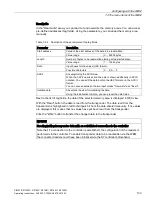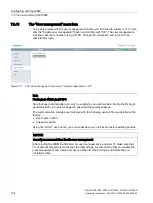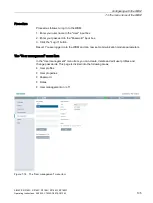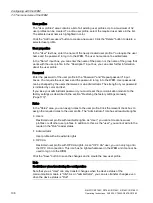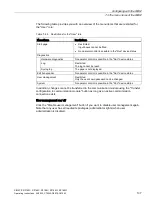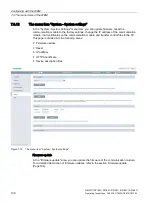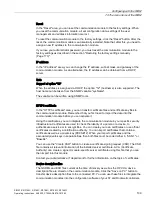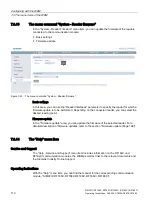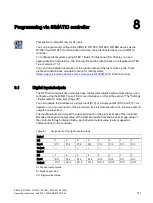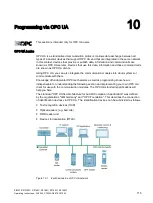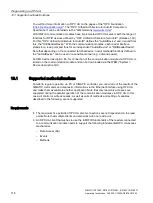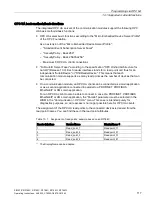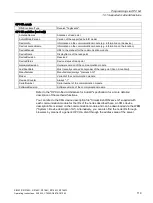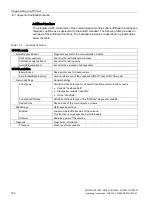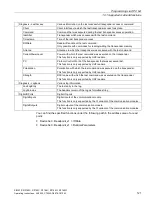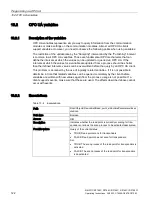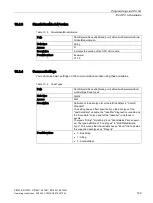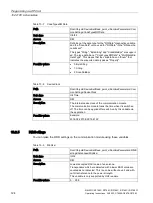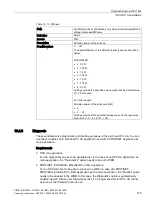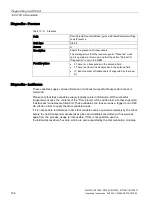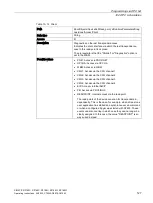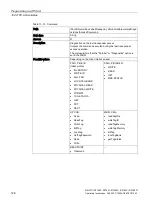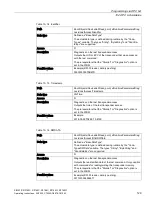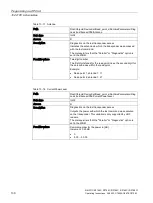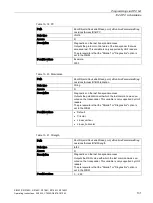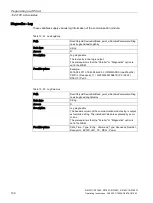
Programming via OPC UA
10.1 Supported methods/functions
SIMATIC RF185C, RF186C, RF188C, RF186CI, RF188CI
Operating Instructions, 04/2020, C79000-G8976-C512-03
117
OPC UA basic methods/basic functions
The integrated OPC UA servers of the communication modules support the following OPC
UA basic methods/basic functions:
●
OPC UA server basic functions according to the "Micro Embedded Device Server Profile"
of the OPC Foundation.
As an extension of the "Micro Embedded Device Server Profile":
–
"Standard Event Subscription Server Facet"
–
"SecurityPolicy - Basic256"
–
"SecurityPolicy - Basic 256Sha256"
–
Maximum 5 OPC UA client connections
●
"Full AutoID Server Facet" according to the specification "OPC Unified Architecture for
AutoID" (Release 1.00). Each reader interface stands for a read point and thus for an
independent "AutoIdDevice" or "RfidReaderDevice". This means that each
communication module supports as many read points as the number of devices that can
be connected.
●
On a communication module, an OPC UA client can be connected as a main application
or as a second application connected in parallel to a PROFINET, PROFIBUS,
EtherNet/IP or XML main application.
For an OPC UA client to also be able to connect in case of a PROFINET, PROFIBUS,
EtherNet/IP or XML main application, the "Parallel" parameter must be selected in the
WBM in the "Communication > OPC UA" menu. This case is intended purely for
diagnostics purposes, so write access is no longer possible here for OPC UA clients.
The assignment of the OPC UA read points to the connected devices is derived from the
read point names. You can find these in the read point attributes.
Table 10- 1 Assignment of read points; example based on an RF188C
Reader interface
BrowseName
DisplayName
1)
1
Read_point_1
Readpoint_11
2
Read_point_2
Readpoint_21
3
Read_point_3
Readpoint_31
4
Read_point_4
Readpoint_41
1)
The DisplayName can be adapted.

